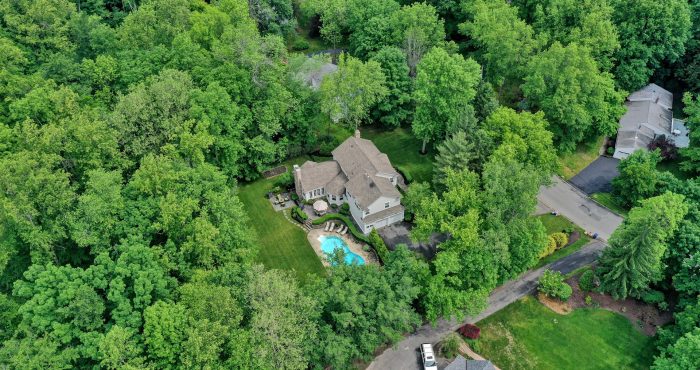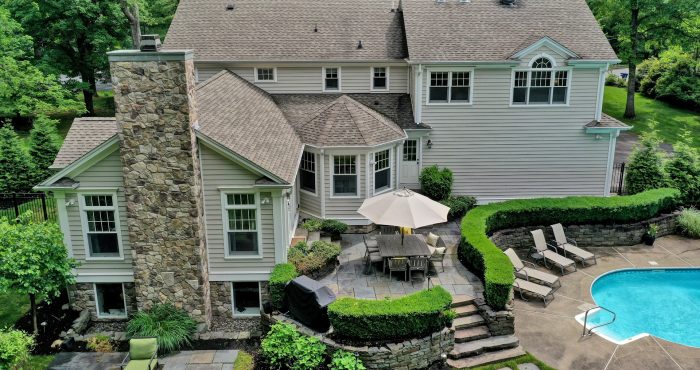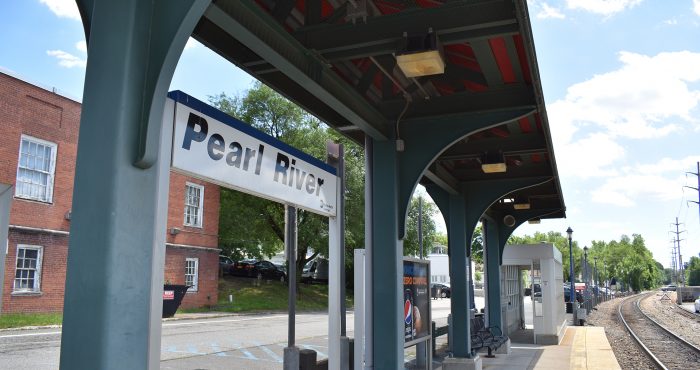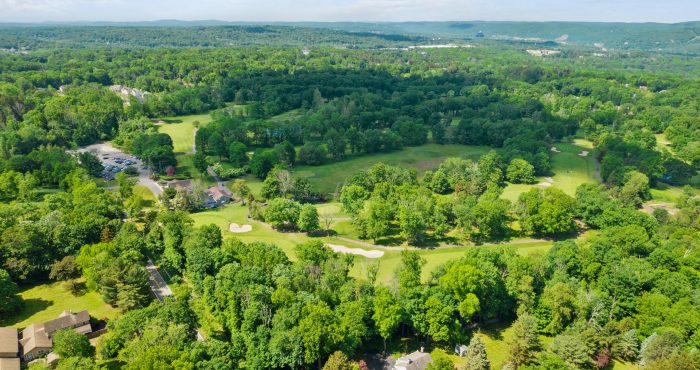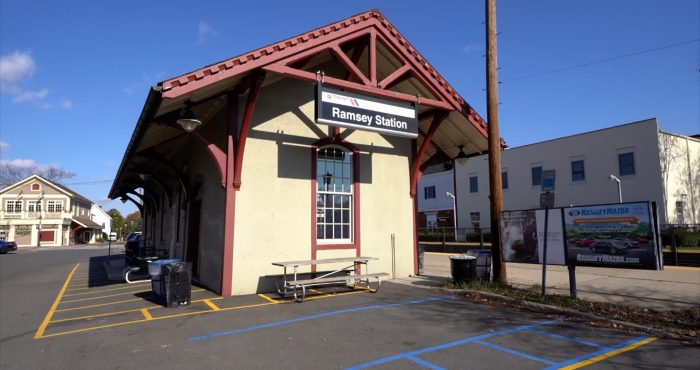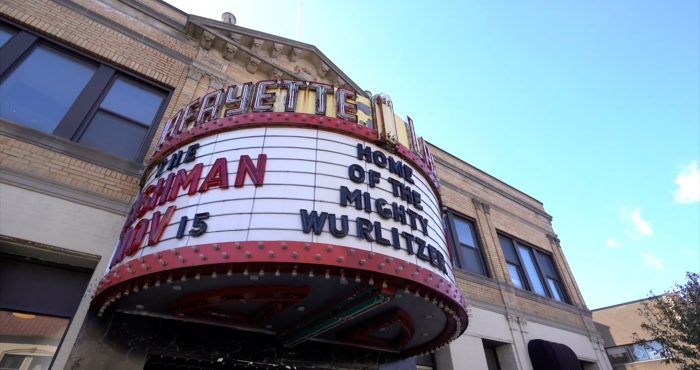
Rockland County, New York Real Estate
You found the right website if you are searching for homes for sale in Rockland County, NY. Our website has EVERY Rockland County home for sale in New York listed with New Jersey MLS (NJMLS) & OneKey MLS (OKMLS).
Rockland County is the southernmost county on the west side of the Hudson River in the U.S. state of New York, part of the New York City metropolitan statistical area. It is a suburb of New York City that is about 6 miles (10 kilometers) from the Bronx at their closest points. The county’s population, as of the 2020 United States Census, is 338,329, making it the third-most densely populated county outside New York City within New York (after Nassau and neighboring Westchester Counties, respectively). The county seat is New City. Rockland County is accessible via the New York State Thruway, which crosses the Hudson to Westchester at the Tappan Zee Bridge ten exits up from the NYC border, as well as the Palisades Parkway five exits up from the George Washington Bridge. The county’s name derives from “rocky land”, as the area has been aptly described, largely due to the Hudson River Palisades.
Living in Rockland County, NY
Rockland County is the smallest county by area in New York outside New York City. It comprises five towns and nineteen incorporated villages, with numerous unincorporated villages (sixteen) and hamlets. Rockland County is designated as a Preserve America Community, and nearly a third of the county’s area is parkland.
History
The area that became Rockland County was originally inhabited by Algonquian-speaking Native Americans, including Munsees, or Lenni Lenape. The Tappan tribe had a particularly noteworthy presence in the area, extending from present-day Nyack, south to Sparkill and Tappan, down the Hackensack River valley through present-day Bergen County, NJ, and also along the Palisades and Hudson shore all the way down to present-day Edgewater, NJ.
In 1609, Henry Hudson was the first major Dutch explorer to arrive in the area. Hudson, thinking he had found the legendary “Northwest Passage”, sailed on the Half Moon up the river that would one day bear his name, and anchored near the area that is now Haverstraw before continuing north of what is now Albany.
In the years before 1664 when the area was formally a Dutch colony called New Netherland, present-day Rockland did not have formal European settlements. However, individuals did explore the area and made transactions with Tappan tribe for land with the idea that it could have future use. For example, in 1640, Dutch Captain David Pietersz. de Vries purchased from natives the area where the Sparkill Creek flows into the Hudson River.
In 1664, the British Crown assumed control of New Netherland from the Dutch. In June 1664, the Berkeley-Carteret land grant established the colony of New Jersey, dividing present-day Rockland and Bergen Counties into separate political areas. The northern border of New Jersey was placed in a straight line from the Delaware River at present-day Port Jervis to the Hudson River at 41 degrees even North latitude, where the Palisades Cliffs pause and give way to Sneden’s Landing in Orangetown. The state line remains there to this day, though various disagreements along the exact border were had over the years.
In the 1670s, permanent Dutch settlers began to arrive with land grants, starting with the Tappan area. These settlers were eager to escape “city life”, moving from Manhattan to Rockland. A number of unique, Dutch-style red sandstone houses still stand, and many place names in the county reveal their Dutch origin.
In 1683, when the Duke of York (who became King James II of England) established the first 12 counties of New York, present-day Rockland County was part of Orange County, known then as “Orange County South of the Mountains”. Orangetown was created at the same time under a royal grant, originally encompassing all of modern Rockland County. Around this time, as the English began to colonize Nyack and Tappan, the Native Americans began to leave Rockland in search of undisturbed land further north.
The natural barrier of the Ramapo Mountains and the size of the county made carrying out governmental activities difficult. At one point, two governments were active, one on each side of the Ramapo Mountains, so Rockland split off from Orange in 1798 to form its own county. That same year, the county seat was transferred from Tappan to New City, where a new courthouse was built.
Haverstraw was separated from Orangetown in 1719, and became a town in 1788; it included the present-day Clarkstown, Ramapo, and Stony Point. Clarkstown and Ramapo became towns in 1791, followed by Stony Point in 1865.
During the American Revolution, when control of the Hudson River was viewed by the British as strategic to dominating the American territories, Rockland had skirmishes at Haverstraw, Nyack, and Piermont, and significant military engagements at the Battle of Stony Point, where General “Mad” Anthony Wayne earned his nickname. George Washington had headquarters for a time at John Suffern’s tavern, the later site of the village of Suffern. British Major John André met with American traitor Benedict Arnold near Stony Point to buy the plans for the fortifications at West Point. André was captured with the plans in Tarrytown on his way back to the British lines; he was brought to Tappan for trial in the Tappan church, found guilty, hanged, and buried nearby. Still another important chapter in the story of the Revolution was written on May 5, 1783, when General Washington received Sir Guy Carleton at the DeWint House, where they discussed terms of a peace treaty. Two days later, Washington visited Sir Guy aboard a British war vessel H.M.S Perseverance. On this day, the king’s navy fired its first salute to the flag of the United States of America.
In the decades following the Revolution, Rockland became popular for its stone and bricks. Many buildings in New York City were built with bricks made in Rockland. These products, however, required quarrying in land that many later believed should be set aside as a preserve. Many unsuccessful efforts were made to turn much of the Hudson Highlands on the northern tip of the county into a forest preserve. Union Pacific Railroad president E. H. Harriman, though, donated land and large sums of money for the purchase of properties in the area of Bear Mountain. Bear Mountain/Harriman State Park became a reality in 1910 when Harriman’s widow donated his lands to the state, and by 1914, more than an estimated one million people a year were coming to the park. After World War I, Rockland County became the most important sausage-making hub in New York.
In 1911, Letchworth Village, an institution for the mentally disabled opened in Rockland County near Thiells. The institution gained national infamy in 1972, when an investigation by Geraldo Rivera revealed the patients there to having been housed in neglectful conditions. Letchworth closed in 1996.
Rockland remained semirural until the 1950s, when the Palisades Interstate Parkway, Tappan Zee Bridge, and other major arteries were built. In the decades that followed, the county became a maturely developed suburb of New York City. As people moved up from the five boroughs (particularly the Bronx in the early years) the population flourished from 89,276 in 1950 to 338,329 in 2020.
Education
The county is home to several Blue Ribbon School of Excellence Award winners, awarded by the U.S. Department of Education:
- In 2000–2001, Liberty Elementary School in Valley Cottage (semi-finalists in 2004)
- In 2007, Strawtown Elementary School in West Nyack
- In 2008 & 2014, Franklin Avenue Elementary School in Pearl River
- In 2009, George W. Miller Elementary School in Nanuet
- In 2011, Pearl River Middle School in Pearl River
- In 2013, Cherry Lane Elementary School in Suffern
- In 2016, Nanuet Senior High School In Nanuet
- In 2018, Clarkstown High School South
School districts
- Clarkstown Central School District
- East Ramapo Central School District
- Nanuet Union Free School District
- North Rockland Central School District
- Nyack Public Schools
- Pearl River School District
- Suffern Central School District
- South Orangetown Central School District
Colleges and universities
The county is home to several colleges and universities.
- State University of New York (SUNY): Rockland Community College – Suffern, NY
- Private university:
- Beth Medrash Elyon
- Dominican College (Dominican College of Blauvelt) – Orangeburg
- Long Island University extension site at Rockland Community College – Suffern
- Columbia University’s Lamont–Doherty Earth Observatory
- Nyack College – Nyack
- Rabbinical College Beth Shraga – Monsey, NY
- St. Thomas Aquinas College – Sparkill, NY
- Yeshiva D’Monsey Rabbinical College – Monsey
- Yeshivath Viznitz – Kaser (Monsey)
Sports
The New York Boulders (formerly Rockland), a member of the Frontier League was founded in 2011 by former Yankee catcher John Flaherty of Pearl River, Clarkstown resident Michael Aglialoro (president of Clarkstown Education Foundation) and Stephen Mulvey (former part-owner of the Brooklyn-Los Angeles Dodgers). The team, owned by Bottom 9 Baseball, play their home games at the 6,362-seat, 16-suite Palisades Credit Union Park.
Rockland Country Club is located in Sparkill, New York and features an 18-hole golf course.
The New York Raiders, an American semi-professional rugby league football team based in Congers, New York, currently play in the American National Rugby League (AMNRL) competition. Their home games are at Rockland Lake State Park; they partner with the Canberra Raiders of Australia’s National Rugby League (NRL).
The Nyack Rocklands played minor league baseball in the North Atlantic League from 1946 to 1948. The Rocklands were an affiliate of the Philadelphia Athletics.
Solar field
In 2014, Clarkstown created a first-of-its-kind in New York State 2.3-megawatt solar system consisting of about 4,300 panels on top of a closed, highly regulated, flat shadeless 13-acre section of the former garbage landfill in West Nyack. The unit is sized to generate 3 million kilowatt-hours annually – enough power to supply about 200 homes, that provides one-third of the electric needs of the Town of Clarkstown government. The Clarkstown solar field project is at the maximum size that is currently allowed by New York State. The installation was projected to save taxpayers as much as $4 million over 30 years by reducing the amount of the town’s annual electric bill – which is about $2 million and produce 10 percent of all the electricity that O&R gets through solar power. The project was installed in summer 2014, coming online in October.
Municipalities
Paul W. Adler, the chairperson of the Rockland County’s Jewish Community Relations Council, said in a 1997 New York Times article that “There are two reasons villages get formed in Rockland. One is to keep the Hasidim out and the other is to keep the Hasidim in.”
Administrative divisions of New York
- There are five towns in Rockland County. The most populous is Ramapo at 148,919, while the least populous is Stony Point, at 14,655, according to the 2020 US Census.
- There are nineteen incorporated villages in Rockland County, twelve of which are located at least partially in the town of Ramapo, and none of which are in Stony Point.
- There are seventeen Census-designated places and seven Hamlets within the five towns of Rockland County.
Towns
- Clarkstown (pop. 86,855)
Clarkstown is divided into 4 wards for the purposes of municipal representation - Haverstraw (pop. 39,087)
- Orangetown (pop. 48,655)
- Ramapo (pop. 148,919)
- Stony Point (pop. 14,655)
Villages
- Airmont
- Chestnut Ridge
- Grand View-on-Hudson
- Haverstraw
- Hillburn
- Kaser
- Montebello
- New Hempstead
- New Square
- Nyack
- Piermont
- Pomona
- Sloatsburg
- South Nyack
- Spring Valley
- Suffern
- Upper Nyack
- Wesley Hills
- West Haverstraw
Census-designated places
- Bardonia
- Blauvelt
- Congers
- Hillcrest
- Monsey
- Mount Ivy
- Nanuet
- New City (county seat)
- Orangeburg
- Pearl River
- Sparkill
- Stony Point
- Tappan
- Thiells
- Valley Cottage
- Viola
- West Nyack
Hamlets
- Central Nyack
- Garnerville
- Jones Point
- Palisades
- Rockland Lake
- Sparkill Previously known as Tappan Sloat
- Tallman
- Tomkins Cove
Points of interest
Educational and cultural
- Major John Andre Monument – Tappan, New York. Represents British army officer John André, put to death for assisting Benedict Arnold in his attempted surrender in West Point during the American Revolutionary War.
- Camp Shanks – Orangetown, New York. A museum in a former military camp, named for Major General David Carey Shanks (1861–1940).
- Edward Hopper Birthplace and Boyhood Home- Nyack, New York. The home of American realism painter Edward Hopper, now an art center.
- Mount Moor African-American Cemetery – Established in 1849 and contains approximately 90 known graves and is located at Palisades Center, West Nyack.
- The Old 76 House- Tappan, New York. One of the oldest bars in America, a meeting place for Patriots during the Revolutionary War, headquarters of Nathaniel Greene.
- Washington Avenue Soldier’s Monument and Triangle – Suffern, New York. Honors George Washington and Rochambeau, where they encamped during the American Revolutionary War.
Commercial and entertainment
- Blue Hill Plaza – Pearl River, New York. 21-story office tower and an eight-story office building on 90-acres of landscaped and wooded property.
- Lafayette Theatre – A movie palace in downtown Suffern, New York.
- Palisades Center – West Nyack, New York. Opened in 1998, one of America’s largest shopping malls.
- Palisades Credit Union Park – Ramapo, New York. A baseball stadium home to the New York Boulders and the St. Thomas Aquinas College baseball team.
- Rockland Bakery – Nanuet, New York. Opened in 1986, Rockland’s biggest bakery, delivering bread and other baked products as far as Connecticut, New Jersey and Pennsylvania.
- The Shops at Nanuet – Nanuet, New York. Opened in 1969 as Nanuet Mall. It was the site of the notorious 1981 Brinks Robbery.
Parks
- Bear Mountain State Park – Stony Point, New York
- Blauvelt State Park – Blauvelt, New York
- Harriman State Park (bordered between Rockland and Orange County, New York)
- High Tor State Park – Clarkstown, New York
- Hook Mountain State Park – Clarkstown, New York
- Nyack Beach State Park – Upper Nyack, New York
- Rockland Lake State Park – Congers, New York
- Tallman Mountain State Park – Orangetown, New York
Rockland County, NY Schools
Buying a Rockland County, NY Home
If you are a Rockland County, NY home buyer, our foremost goal is to provide you with exceptional customer service. Our goals are to help you purchase the right home, make sure you don’t miss out on any homes that meet your needs, and make sure you don’t pay too much for your next home. Please utilize our Rockland County, New York real estate expertise to make your home search and buying experience as stress free and rewarding for you and your family as possible.
Selling Your Rockland County, NY Home
If you’re considering selling your Rockland County, New York home, we utilize the latest, cutting-edge, real estate marketing tools to expose your property to the widest range of potential buyers. We are here to get your house aggressively marketed to sell as quickly as possible and for the best price! Our goals are to help you get your Rockland County, NY home sold, put you in the strongest negotiating position as possible, and to make it easier for you and reduce surprises.
Hot Rockland County, NY Properties
 $1,200,000
Active
$1,200,000
Active
337 Route 306 Monsey, New York
5 Beds 3 Baths 2,065 SqFt 0.57 Acres
 $1,200,000
Pending
$1,200,000
Pending
1 Deforest Court West Nyack, New York
5 Beds 5 Baths 4,758 SqFt 0.92 Acres
 $1,200,000
Active
$1,200,000
Active
36 Windmill Lane New City, New York
6 Beds 4 Baths 3,040 SqFt 0.54 Acres
 $1,200,000
Active
$1,200,000
Active
74 S Highland Avenue Nyack, New York
5 Beds 4 Baths 3,031 SqFt 0.55 Acres
 $1,200,000
Pending
$1,200,000
Pending
4 Frost Court New City, New York
5 Beds 3 Baths 3,566 SqFt 1.26 Acres
 $1,200,000
Active
$1,200,000
Active
4 Newport Drive Nanuet, New York
4 Beds 3 Baths 2,440 SqFt 0.52 Acres
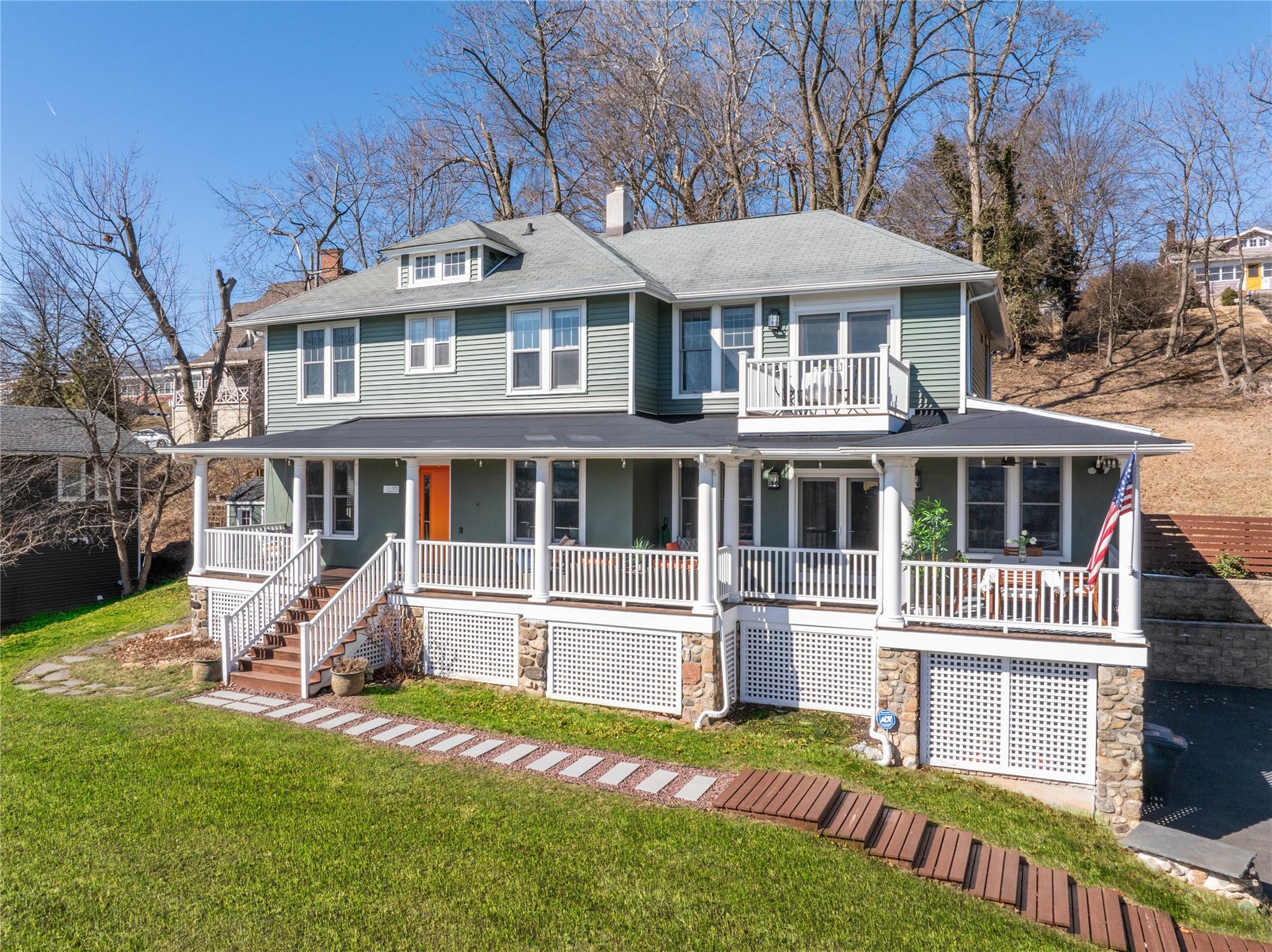 $1,200,000
Pending
$1,200,000
Pending
172 N. Franklin Street Nyack, New York
4 Beds 3 Baths 2,654 SqFt 0.65 Acres
 $1,200,000
Active
$1,200,000
Active
34 East Lane Spring Valley, New York
3 Beds 2 Baths 2,229 SqFt 2.28 Acres

